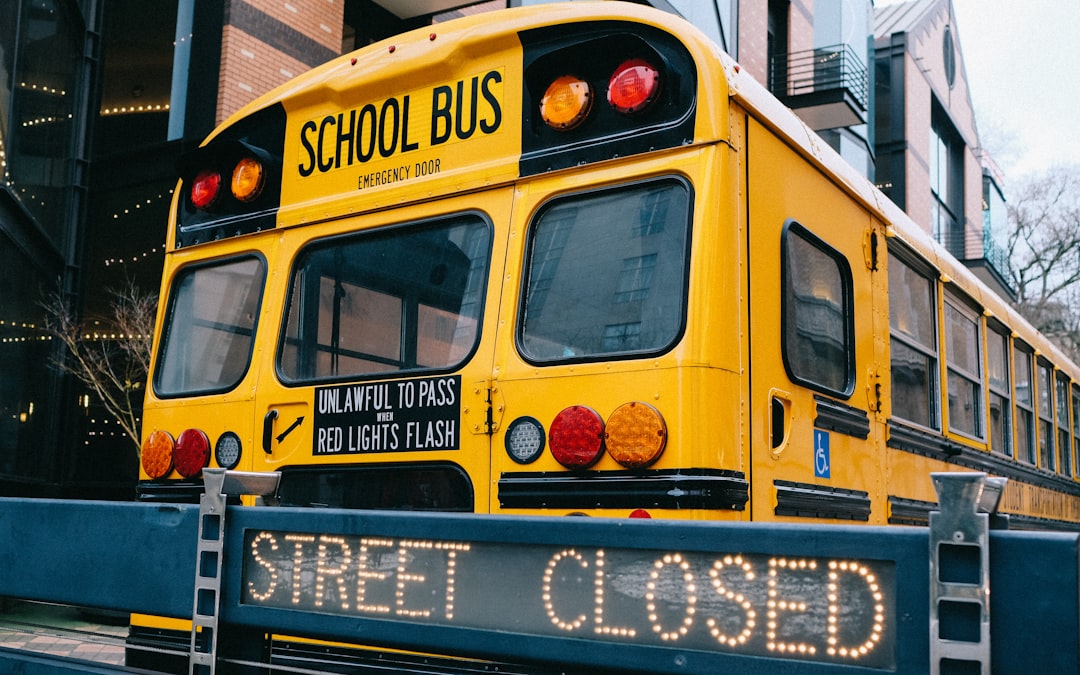A Bold Claim Amid the Chaos (Image Credits: Unsplash)
Storm clouds still linger over flooded classrooms, where the rush of rainwater echoes the urgency of piecing together disrupted lives and lessons.
A Bold Claim Amid the Chaos
Imagine facing down a major hurricane, only to hear the federal government say it won’t step in to help schools recover. That’s the reality brewing as President Trump’s Education Secretary, Linda McMahon, insists that eliminating the Department of Education is no big deal. She argues the shutdown proves the agency isn’t essential, even as storm-damaged districts scramble for support.
This stance comes at a tense time. Recent executive orders have already slashed staff and shifted responsibilities to states, leaving questions about who handles crisis response. For communities hit hard by this season’s wild weather, it’s a gamble that feels all too real.
The Department’s Role in Disaster Recovery
Federal education aid often flows through the Department of Education during disasters, funding everything from temporary learning spaces to rebuilding infrastructure. Without it, states might shoulder the full load, but not all have the resources ready. Hurricanes like the ones pounding the coasts this year expose those gaps quickly.
Think about special programs for kids with disabilities or civil rights protections in schools – these rely on federal oversight that’s now hanging by a thread. Layoffs have gutted enforcement teams, meaning delays in aid could stretch recovery timelines for months.
McMahon’s Vision: States Take the Wheel
Linda McMahon sees this as a chance to streamline, pushing power back to local levels where she believes decisions hit closer to home. During a recent shutdown, she pointed out how operations limped along without major hiccups, using that as evidence the department’s bloated. Yet critics worry this overlooks the patchwork of state capabilities, especially in hurricane-prone areas.
Her approach aligns with broader Trump policies, like Project 2025, which aim to cut federal strings attached to education dollars. For storm survivors, that could mean less coordinated help when schools need it most.
Real Impacts on Students and Teachers
Kids returning to moldy hallways or virtual setups face enough hurdles without added bureaucracy. The department’s loans and grants have historically eased burdens post-storm, covering lost supplies or mental health services. Now, with staff halved and more cuts looming, those lifelines might dry up.
Teachers, too, could see ripple effects. Professional development tied to federal standards might vanish, leaving educators to adapt on the fly amid recovery chaos. It’s a scenario playing out in real time across affected regions.
Comparing Before and After the Cuts
| Aspect | With Full DOE Support | Post-Elimination Scenario |
|---|---|---|
| Disaster Aid Distribution | Quick federal grants for school repairs | State-led, potentially slower and uneven |
| Civil Rights Enforcement | Oversight for equitable recovery | Limited monitoring, higher risk of disparities |
| Student Loans/Grants | Streamlined access during crises | Shifted to other agencies, possible delays |
This table highlights the shift. Before the push to dismantle, the department acted as a safety net. Now, as functions scatter, hurricane-hit schools might wait longer for help that once came reliably.
Voices from the Front Lines
Ground zero for these changes includes coastal states where storms have uprooted routines. Local leaders report confusion over funding paths, with some districts already tapping emergency reserves. McMahon’s optimism clashes with these on-the-ground frustrations.
Still, supporters argue innovation could emerge from decentralization. They point to past efficiencies in non-federal programs. The test comes with the next big storm – will it hold up?
Looking Ahead: What Recovery Might Look Like
As the 2025 hurricane season winds down, the debate intensifies. Eliminating the department could reshape how America handles education in crises, for better or worse. States with strong budgets might thrive, but others could struggle, widening divides.
One key takeaway: Preparation matters more than ever. Communities are already brainstorming local solutions, from partnerships to tech-driven learning.
- Federal cuts could delay school rebuilding by weeks or months in vulnerable areas.
- State variations mean uneven support for students post-disaster.
- Civil rights and special education protections face the biggest risks without dedicated oversight.
In the end, while McMahon’s confidence might inspire some, the stakes feel sky-high for families rebuilding after the winds die down. It’s a pivotal moment to watch how policy meets reality. What do you think – can states handle this alone? Share in the comments below.




